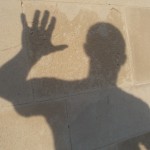“Cattitude” (AKA “Cat Attitude)
Lessons From Our Feline Companions About Maintaining High Self Esteem
I’m a cat person. I always have been. I’ve been thinking lately about the relationship I have with my present cat, Phantom, as well as all my previous cats. Specifically, I’ve been pondering the question of why I derive such a feeling of contentment and peace just being in the presence of Phantom. Sometimes just watching him is enough. As I contemplate this question further, I realize that the feeling of peace I derive from my cat relationships is not just my relationship to my cat. No no…it’s more than that. I’m also endlessly fascinated by Phantom’s relationship to his own little internally constructed “cat” world. I don’t think I’m alone in this, so I welcome any one else’s thoughts on the subject. So…what exactly is the nature of the “cat” world? I don’t really know for sure of course, but here is what I imagine, based on decades of careful observation.
Phantom is content to remain at home all day long. He basically wanders from room to room all day sleeping and eating at will with no demands on him to do anything else. I imagine him not at all bored with this activity. Phantom just has to BE and that’s pretty much it. His existence seems to be the ultimate of “Isness.
When I get home every day I call for Phantom. He may or may not come. If Phantom is enjoying a snooze in a sunny spot or otherwise engaged, he’ll show up later. The thing is, Phantom knows that whenever he chooses to grace me with his presence, I will be happy to see him. But lets face it, Phantom, and most of the well cared for and secure cats I know, is basically his own boss. If he’s in the mood for me, he will respond to my affection. With a few exceptions I’m pretty much always in the mood for my cat. He draws me in with his simple grace and beauty and I’m hooked.
Is there another creature alive that can relax completely in the way a cat does? Check out that languid sinuous cat body as it virtually melts onto the surface of the cushion, or the piano, or the cool tile. A cat can be happy on so many surfaces, but he always arranges his limbs perfectly and efficiently. Ever notice how your cat gets up from his nap? Wish you could stretch in such a satisfying way? It all just comes so naturally!
And what about the cats ability to sleep for long periods of time? Seriously. What must the dreamworld of a cat be like? I imagine my cat creating an endless playground of delights as he sleeps. In dreams, we can create whatever we want. My cat must surely be creating something he really enjoys. Otherwise…he would not sleep so much. Cats don’t do what they don’t want to do.
When my cat is relaxing, he’s not always sleeping…so I imagine he must spend endless hours in some kind of blissful meditative state, again…just…being
So, in conclusion I’ve decided I like to be with my cat fundamentally because there is a part of me that longs to be a cat myself. Please, please, just allow me endless hours of relaxed sleep and meditation. Let me just revel in the miracle of my own existence and not have to be so busy all the time. Let me be completely content with who I am and where I am in each moment. Let me “live” in the moment the way my cat does. Let me be capable of relaxing completely in my own body and let me be so sure of myself all the time that “letting go” and falling asleep is never a problem
This is what I mean by “Cattitude”. I want more of it. Sometimes I can’t find any of it at all, and my meditation becomes just watching my cat to see if I can get it back.
How about you? Got “Cattitude?”










